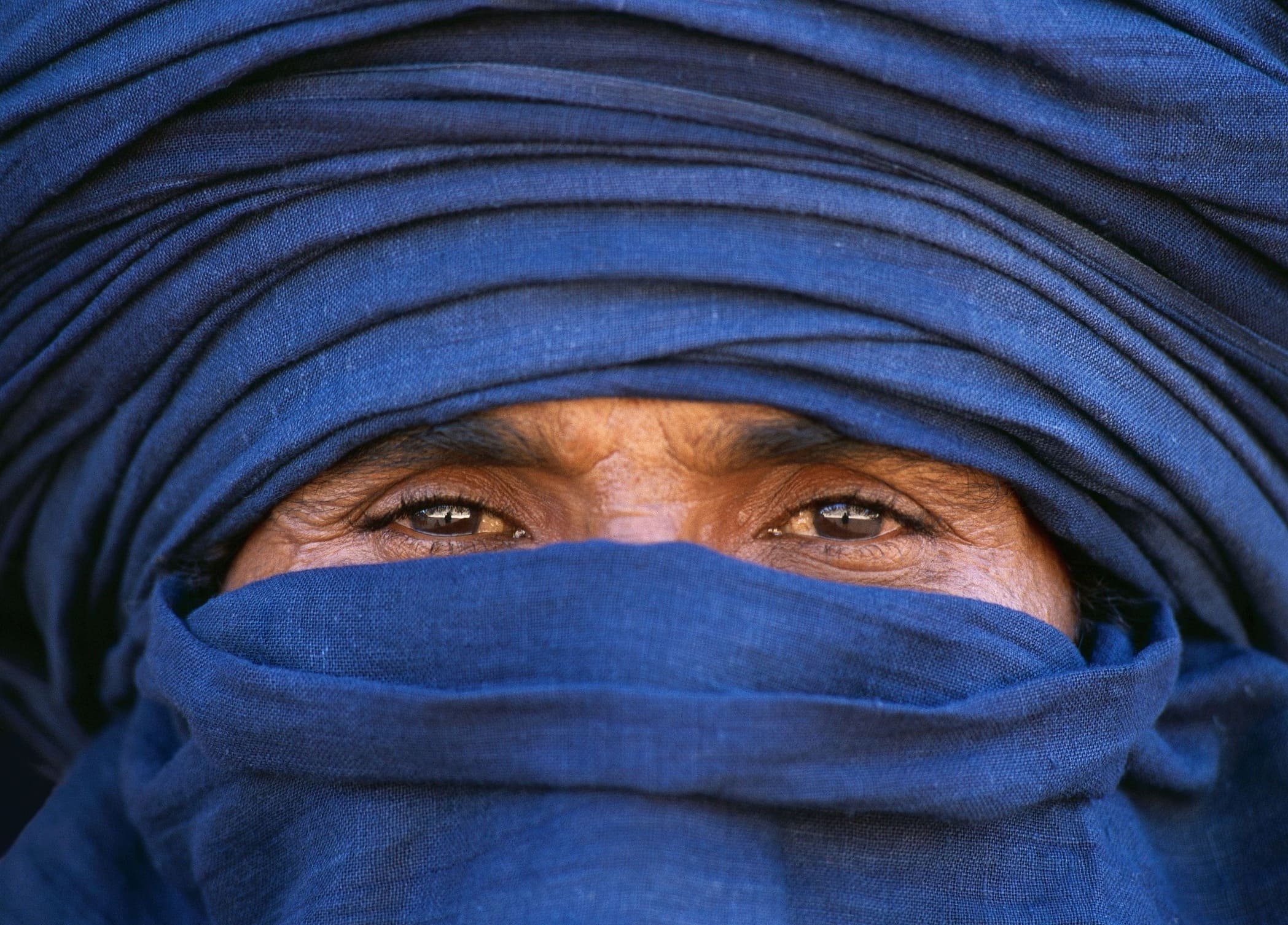What is the chèche and where does it come from?
The chèche is a long veil, often 4 to 10 metres long, that Tuareg men wrap around their heads and faces. It takes its name from the town of Chach in Uzbekistan. Depending on the Tuareg tribe and region, it is sometimes called Tagelmust or Litham. The expression ‘Kel Tagelmust’, meaning ‘those of the veil’, is frequently used to refer to the Tuareg, making the chèche an inseparable part of the identity of the Tuareg people.
For Tuareg men, the full traditional outfit includes the chèche, a sarouel called an ekerbey, a wide gandoura often called an erraoussei or takakat, sandals and the traditional sword, the takoba. This outfit, emblematic of Tuareg culture, makes the chèche a central element of appearance and social status.
The chèche can be of several colours, although white, indigo blue and black are the most common. The indigo blue chèche, the symbol of Tuareg men, is worn during festivals and in cold weather, as it provides better thermal insulation. Indigo, extracted from the leaves of the indigo tree, often bleeds onto the skin, hence the nickname given to Tuareg men: ‘the blue men’. This colour, a symbol of nobility in the Algerian Sahara, has long been associated with wealth and prestige among the Tuareg tribes.

